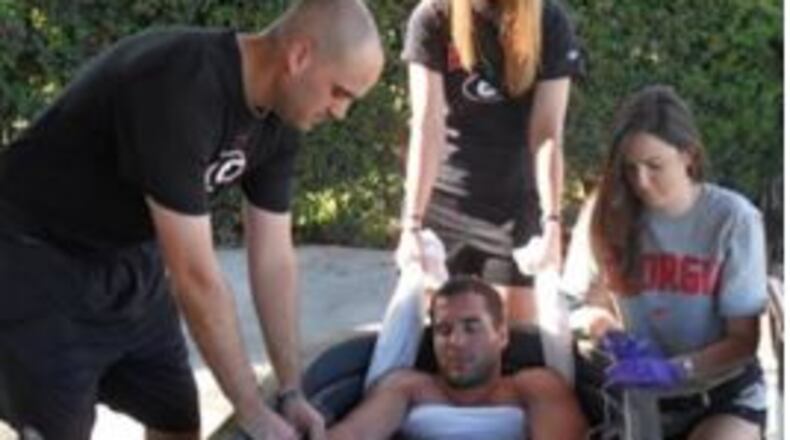Policies for school athletics and heat have evolved in recent years, but students keep dying.
On a scorching day in mid-August, Imani Bell, 16, collapsed during a workout for basketball at Elite Scholars Academy in Clayton County, according to her parents. The autopsy results aren't publicly available yet, but a family spokesman has said her skin was as hot as an "oven."
In 2016, Johnny Tolbert, 12, died of heatstroke after doing conditioning drills in south Fulton County, prompting a study committee of the Georgia House of Representatives that met there in late August and learned how overheated kids die: cell by cell in a process called apoptosis.
“It’s that multi-organ failure that causes these patients to die,” testified Dr. Ben Lefkove, an emergency medicine physician.
Ice packs applied to the neck, armpits and groin or, better yet, an ice-water soak, can stop the process. Heat exhaustion starts at a core body temperature over 104 degrees, with heat stroke starting above 105. "With heat stroke, you have 10 to 15 minutes before you get to a point of survival which is very, very slim," said Rebecca Stearns, an expert on heat and sport at the University of Connecticut. Survival is ensured if the victim is placed in an ice-water bath, the assistant professor of kinesiology said.
The only accurate measure when the body is that hot is a rectal thermometer, so Stearns recommends watching for confusion and combativeness, or headache and dizziness.
The Georgia High School Association, the governing body for school sports, has been expanding its rules as the research has evolved.
In 2007, the association's constitution merely required school districts to devise policies for "extremely high heat and/or humidity." The heat index accounts for heat combined with humidity. In 2011, the association introduced a more nuanced measure — the wet bulb globe temperature — that also considers cloud cover, wind speed and sun angle. Schools could use either until 2012, when the wet bulb method became mandatory. Also starting in 2012 were temperature-related mandates: longer breaks and careful monitoring of players starting at 82 degrees; maximum practice of two hours and no protective equipment during football conditioning exercises at 87-89 degrees; and exercise capped at an hour and no protective equipment or conditioning allowed in football at 90-92 degrees.
Over 92 degrees: no outdoor workouts allowed.
Also in 2012, association spokesman Steve Figueroa said, a form on which coaches were required to record the daily temperature began to carry mandates for cooling equipment over 86 degrees: Ice towels, ice water sprays and, crucially, cold immersion tubs were required. In 2018, the equipment mandates were added to the association's constitution. Beginning this year, that constitution now requires overheated students to be cooled to 103 degrees before transport to a hospital because ambulances aren't equipped for it, said Don Corr, associate director of sports medicine for the high school association. He advises coaches to leave a covered tub on the field wherever a water hose is handy, then bring ice to fill it for each practice.
How hot is too hot?
Measuring the temperature can be confusing, given the many methods. Here are the numbers for Aug. 13, when basketball Imani Bell died after practice at her Clayton County school:
100.3 — the plain old thermometer method in metro Atlanta
109 — the heat index, which accounts for humidity
88 — the wet bulb globe temperature, with caveats; this is a location-sensitive measure influenced by cloud cover, wind speed and sun angle; WSB-TV meterologist Brian Monahan calculated that was the temperature at the airport about a dozen miles away
The Georgia High School Association bases its temperature mandates on national best practices. Here are the rules using the wet bulb globe temperature:
82-86.9: breaks increase by a minute to four minutes; watch players carefully
over 86: ice towels, ice water spray bottles and cold immersion tubs mandated
87-89.9: the number of breaks increased by one, to four; practice capped at two hours; in football, no protective equipment during conditioning
90-92: practice capped at an hour with 20 minutes of breaks; for football, no protective equipment and no conditioning
92: outdoor practice forbidden
About the Author
Keep Reading
The Latest
Featured



